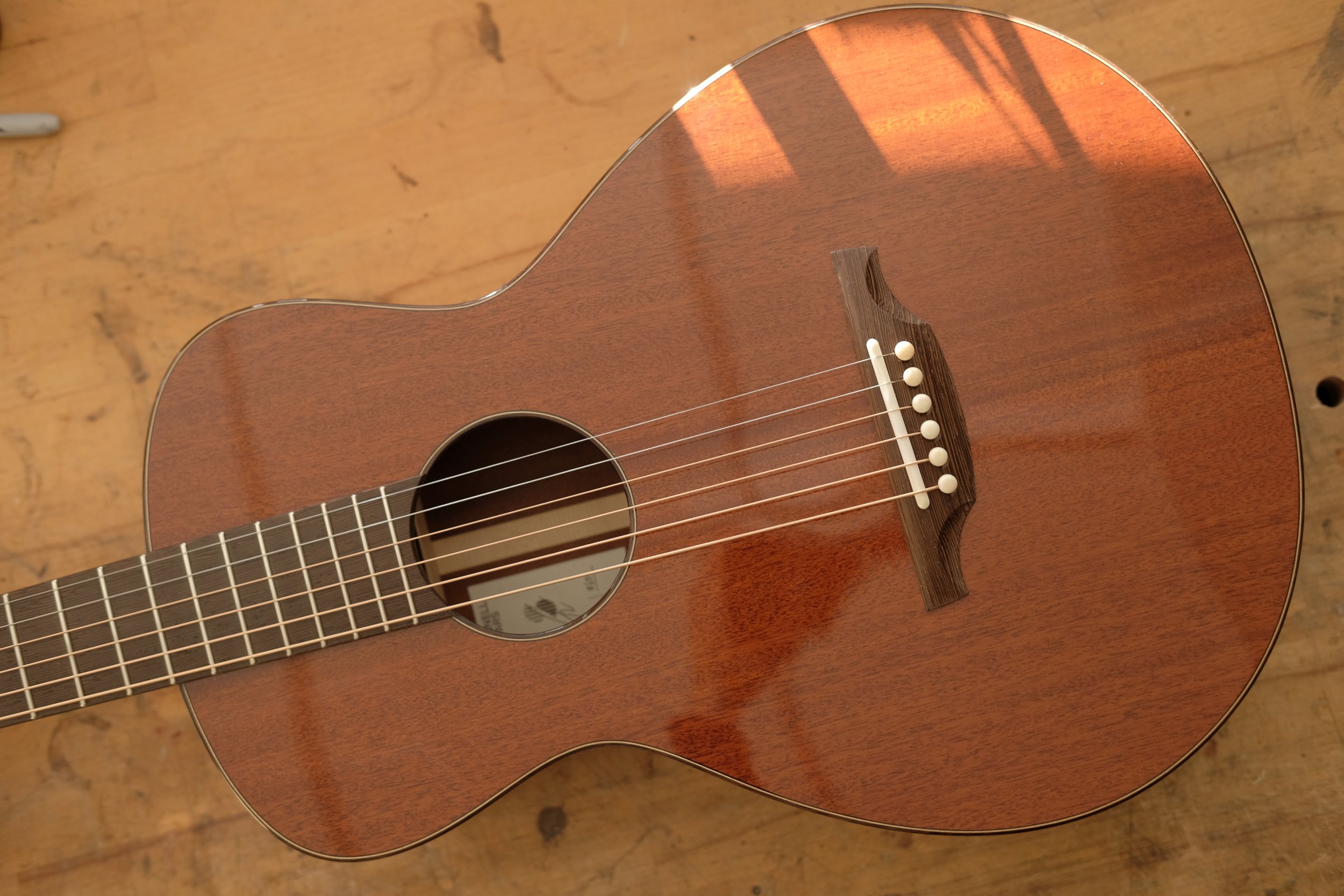The All Mahogany Parlour Guitar
I LOVE PARLOUR GUITARS.
I recently finished this guitar. Its a rather special one, and I’m particularly pleased with it. For me, perhaps because I’m not the tallest of individuals, parlour guitars have always held a special place in my heart. Some of the nicest sounding guitars that I’ve ever had the pleasure and privilege to play have been concocted from this magical combination of short scale lengths, small bodies and 12th fret to the body joined necks. This is not the first Parlour that I have made, but it is the first with structured sides and a bolt-on/bolt-off neck. It’s also the first all-mahogany build that I’ve undertaken. I’ve put together a “build thread” below to give you a little insight into how this guitar came into life.
I took a few moments on a quiet day in the workshop to record this little demo. It’s a mash up of something I’ve been noodling with for years and a lovely Pat Metheny tune called “Solo from More Travels”.
I will be bringing this guitar to String Break in Harrogate on the 22nd March 2025 whereupon it will be available for sale. Full details about the model and further photos of the completed insturment can be found here.
Please get in touch below if you are interested in buying this guitar, have any questions, or are thinking to commission your own Swannell guitar.























































